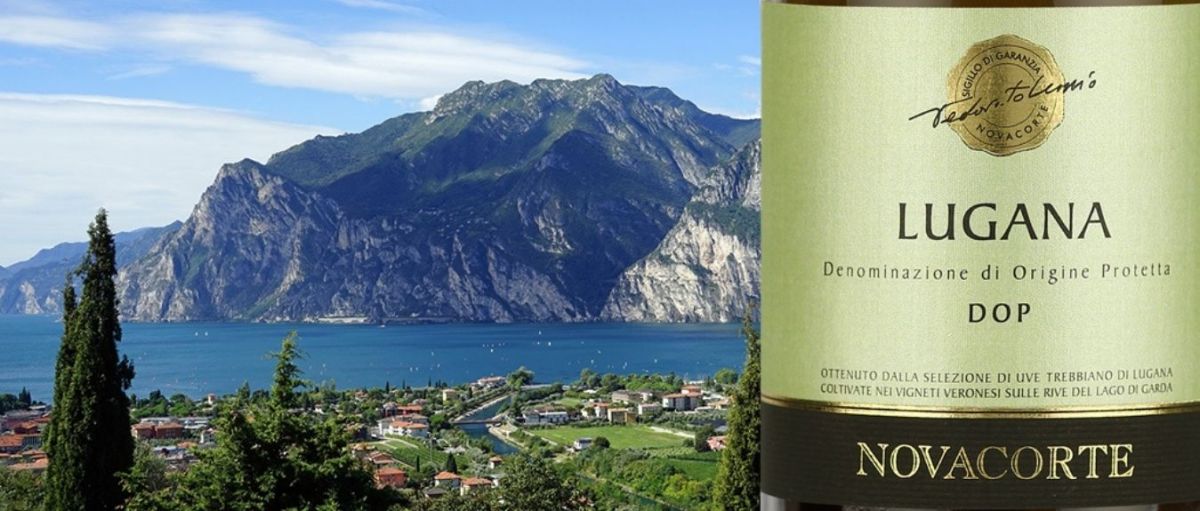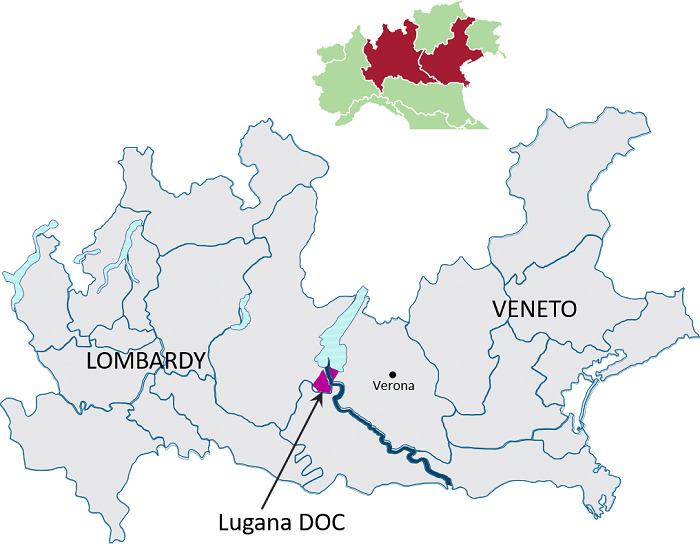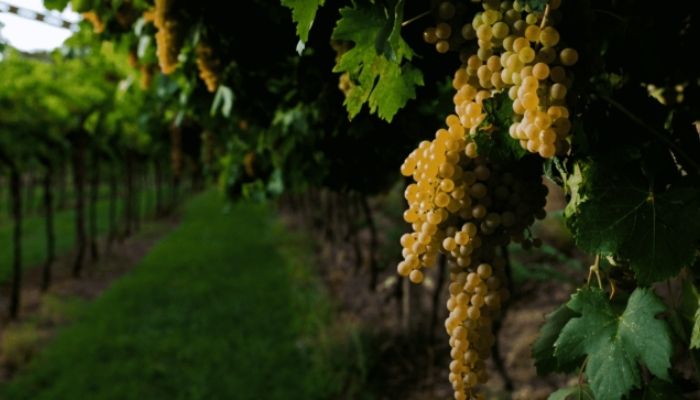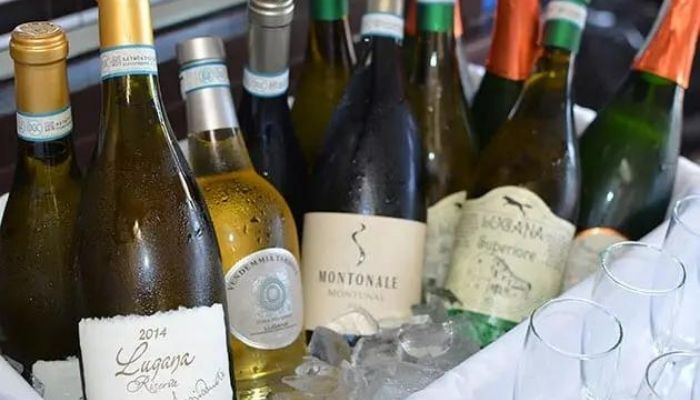Warehouse
Deadline
July 10, 2026
Judging
Date
July 27, 2026
Winners
Announced
August 12, 2026

Here’s why it is increasingly becoming the first choice of retail buyers and restaurants worldwide.
The Lugana DOC is one of Italy's oldest wine-growing regions. Lugana is also one of the few wine districts in Italy that span two provinces, Brescia and Verona, and the two Lombardy and Veneto regions. The vines are grown in a morainic environment that stretches from the lake's shoreline to the first hills. Light clays with calcareous components make up most of the extremely mineral-rich soils.
[[relatedPurchasesItems-44]]
The modern Lugana appellation stretches from the southern shores of Lake Garda to portions of Lombardy and Veneto. Ancient glacial activity has left behind a patchwork of limestone, clay, and sand soils that are perfect for Turbiana farming ( Turbiana, the local name for the grape variety used in Lugana wine)
The Lugana consortium was established in 1990 to promote the Lugana brand and protect its members and consumers both in Italy and internationally. Because of its approachability, affordability, and ease of pairing at the table, this small, quirky region has begun to generate interest among sommeliers across the United States.

Image Source: Italian wine central
Lugana was the first wine in Lombardy to receive DOC certification more than 50 years ago, an award that established the strong connection between these wines and their lakeside origins on an international scale. Since then, the wines have steadily received critical acclaim, mainly as contemporary technology and globalization have raised awareness of Lugana's unique value offer. As a result, the region now produces over 27 million bottles and exports more than 70% of its output.
Grapes have been grown in Lugana since the Bronze Age, but the region was primarily covered in a swampy forest until the founding of the Venetian Republic. The Venetians altered the environment permanently when they cleared land to improve grain and cereal production. Grape cultivation has been front and center since then.

Image Source: Lugana DOC, Lugana Wines Turbiana grape variety
Lugana's identity is defined by a single native grape, Turbiana, in addition to its specific growing region. Turbiana is used to make the majority, if not all, of these wines. Turbiana in Lugana produces a broader, richer expression than, say, Verdicchio dei Castelli dei Jesi, which is leaner and fruitier. Turbiana thrives in the mild temperature of Lake Garda's southern side because it ripens slowly and uniformly. Turbiana's capacity to maintain a high tartaric acidity is one of its most appealing characteristics. It allows it to remain both fresh and zippy in youth and capable of maturing for more than a decade. Almost all Lugana winemakers concentrate solely on the Turbiana grape variety, which is known for its exceptionally high acidity, which is the major reason that Lugana wines their youthful brightness and the structure to age gracefully.
Turbiana's medium-sized golden clusters are hardy and pest and disease resistant, giving producers in the humid locations near Lake Garda a leg up. When grown on fertile soils, the high-yielding variety is prone to overproduction, but the relatively infertile and mineral-rich soils of Lugana counterbalance this tendency to produce complex and compelling fruit.
The ancient Romans enjoyed Lugana white wine, which is notably fruity and fresh in flavor. Many royal and noble houses have admired these qualities of the wine in the past and continue to do so today.
The nose of Lugana wine is delicate, with floral and almond overtones. They intensify after a few years in the bottle, becoming more complex with aromas of ripe apple, citrus, and tropical fruits. However, Lugana's true distinguishing feature is its vibrant acidity and powerful minerality on the palate. They give it a crisp texture and make it an excellent meal companion, even for dishes you wouldn't often match with white wine.

Image source: The Written Palette, Lugana Wines
There are five types of wines produced in the Lugana DOC:
The classic Lugana ages 4-5 months and has a light straw color with floral and nut overtones in the bouquet.
Lugana Vendemmia Tardiva is a dessert wine . This wine differs from its Italian cousin, Passito, due to the overripening of the grapes. Rather than being harvested and dried for several months, the grapes are gathered in late October or early November.
Lugana Spumante, made using the traditional process of gently pressing the grapes, with a maximum of 60% free-run juice extracted, is fermented in stainless steel vats. After 7-8 months of maturation in stainless steel tanks and six months of refermentation in pressurized tanks, the product is ready to consume. After another six months in the bottle, it is released onto the market.
Lugana Superiore ages for at least 12 months. The wine has a golden tint and is more complex. Superiore status was granted in 1998.
Lugana Reserva ages 24 months, including at least six months in the bottle. As a result, the wine grows richer, warmer, and more nuanced on the palate in this example.
The "traditional" Lugana wine has a minimum alcohol concentration of 11%. When the alcohol percentage of wine exceeds 12 percent, it is referred to be Superiore, which denotes a higher level of quality.
This wine has a lovely golden-yellow color and a subtle perfume that appeals to the senses. The wine's freshness is complemented by a distinct fruitiness, resulting in a one-of-a-kind taste experience. In addition, the subtle undertone of wood in Lugana wine is a unique feature that makes this wine memorable for lovers. This mineral flavor, combined with its freshness, results in a light wine that is refreshing to drink, especially when chilled in the summer.
Lugana is a young wine that is crisp and delicious. It's a pale straw yellow with greenish undertones, perfect as an aperitif with cold cuts and fresh, medium-matured cheeses. It pairs well with first dishes like risotto and filled pasta, fish, and shellfish.
The ability of white wine to age in the bottle, transforming into a rich and structured wine, makes it truly unique. Quality Lugana vintages can easily last ten years in the bottle, retaining vigor and freshness. In these circumstances, the hue changes to a bright golden yellow. The aroma intensifies, and the palate becomes creamy and enveloping, with an almost salty flavor and notes of almonds, flints, roasted hazelnuts, and balsamic hints while maintaining balanced acidity.
In the United States, most Lugana is produced in a medium-bodied, easy-drinking style, making superior Lugana a go-to for sommeliers and retailers looking to impress demanding customers while also providing Lugana's excellent value.
Lugana is an interesting tableside discussion starter as customers become more interested in discovering new and remarkable wines. The wines appeal to many drinkers looking for an alternative to standard, mass-produced white wines, thanks to their vibrant aromatics and pleasing light to medium body. Lugana stands out for its amazing ability to please a wide spectrum of drinkers and give value and discovery.
Article by Aakriti Rawat, Beverage Trade Network
Header Image Source: Domus Vini, Lugana Garda DOC, Ancient White Wine of Lake Garda
Grow your wines in the off-premise channels of the USA. The Early Bird submission deadline is February 20, 2026, and the domestic submission deadline is June 30, 2026. Here is how to enter.